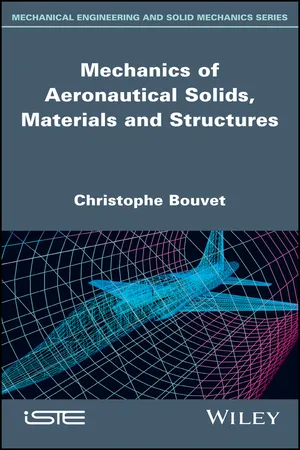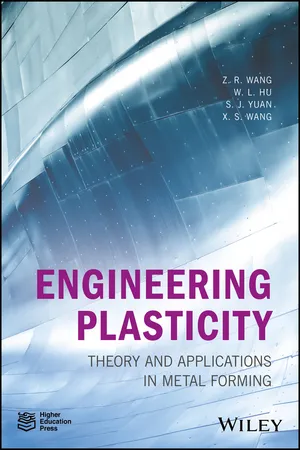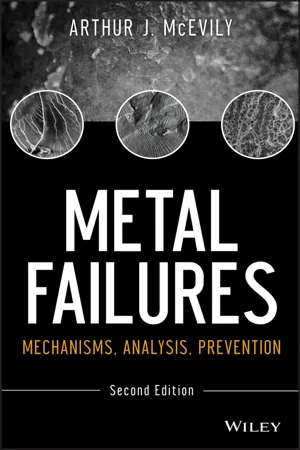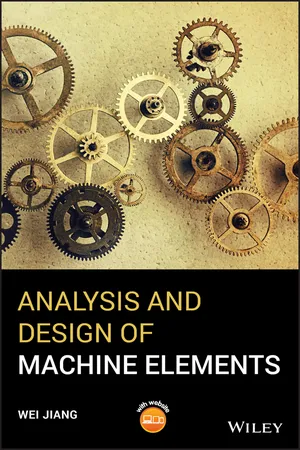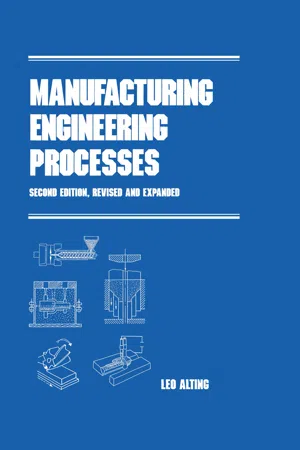Technology & Engineering
Von Mises and Tresca Criteria
The Von Mises and Tresca Criteria are mathematical models used in material science and engineering to predict the yield and failure of materials under stress. The Von Mises Criterion is based on the concept of equivalent stress, while the Tresca Criterion focuses on the maximum shear stress. These criteria are essential for designing and analyzing the structural integrity of various engineering components.
Written by Perlego with AI-assistance
Related key terms
Related key terms
1 of 4
Related key terms
1 of 3
5 Key excerpts on "Von Mises and Tresca Criteria"
- Christophe Bouvet(Author)
- 2017(Publication Date)
- Wiley-ISTE(Publisher)
In reality, this criterion functions rather well, but you obviously must not forget that in reality, it is the material that decides and the engineer’s role is to use the criterion best suited to the studied material!If we trace the Von Mises criterion in the principal stress plane (σI , σII ), we obtain an ellipse passing through ±σe in tension/compression (see Figure 6.8 ).If we now trace the Von Mises criterion in 3D in the principal stress space (σI , σII , σIII ), we obtain a circular-based cylinder with a tri-sector axis (the line of equation x = y = z) and a radius (the tension axis is not perpendicular to the tri-sector axis, hence the coefficient ). This cylinder translates the fact that the criterion is independent of the hydrostatic pressure, namely of any stress tensor translation according to the tri-sector.In the same way, we can trace the Tresca criterion which also gives a cylinder, but with a hexagonal base:Figure 6.10.End of elasticity criteria of a ductile material. For a color version of this figure, see www.iste.co.uk/bouvet/aeronautical.zipIf we now compare the Tresca and Von Mises criteria, in both 2D and 3D, we realize that the difference between these two criteria is rather weak. To choose, we need to experimentally measure the end of elasticity criterion of the studied material and compare these experimental points to the theoretical criteria. In reality, we note that the experimental dispersions are often greater than the difference between these two criteria, and it is difficult to say if one is better than the other. In practice, we use the Von Mises criterion instead, so as to avoid the angular points of the Tresca criterion.6.4.3. Rupture of a ductile material
If we now carry out a tension test on a ductile material, such as steel, for example, until a rupture appears, we note that the rupture facies is (in general) oriented at 45°. This result is rendered properly by the Tresca and Von Mises criteria which assume the predominance of the shear stress over the normal stress. In fact, we can show that in pure tension, the maximum shear is obtained at 45° of the tension direction (and is worth half of the tension stress).- eBook - ePub
Engineering Plasticity
Theory and Applications in Metal Forming
- Z. R. Wang, Weilong Hu, S. J. Yuan, Xiaosong Wang(Authors)
- 2018(Publication Date)
- Wiley(Publisher)
Among a great number of different suggestions, Mises yield criterion, proposed by Mises in 1913 [8], emerged as the most widely used one. Mises yield criterion is expressed as 1.97 where the flow stress can also be determined through a uniaxial tension test, i.e.,. Actually, Tresca and Mises yield criteria are more likely geared to strength theory in mechanics of materials with (initial yield state). To distinguish the application of yield criterion in the plastic deformation from that in the strength theory, it is of critical importance to construct a proper yield criterion. The strength theory deals with the stress condition within the range of elastic deformation. Applying yield criterion to plastic deformation means that the equation is just the offset of plastic strain taking place in a stressed material element (i.e.,), which means that the stresses element starts to enter a plastic deformation process. In other words, is the basis to judge whether the material element has reached the state of plastic deformation. Application of yield criterion to plastic deformation mainly means to take the state into consideration. 1.3.4 Twin Shear Stress Yield Criterion Another yield criterion worthy of being mentioned is twin shear stress yield criterion proposed by Yu in 1961 [9, 10]. Similar to Tresca yield criterion though, it is linked to strength theory and mostly used in mechanics of materials - eBook - ePub
Metal Failures
Mechanisms, Analysis, Prevention
- Arthur J. McEvily, Jirapong Kasivitamnuay(Authors)
- 2013(Publication Date)
- Wiley-Interscience(Publisher)
For the von Mises criterion for yielding, substitute in Eq. 3-18 to obtainFor the Tresca criterion for yielding, substitute in Eq. 3-23 to obtain12(or from the Mohr circle,Equations 1 and 2 each define an ellipse, as shown in the accompanying figure.Tresca: Maximum shear stress Von Mises: Distortion energy3-2. . in this case is equal to—( ).Therefore, , and .From Eq. 3-34,According to the Tresca criterion, is 2.18 times the yield stress in simple tension.According to the von Mises criterion, is times the yield stress in simple tension.Note that when the yield stress in torsion (pure shear) is taken as the basis for the yield criterion rather than the yield stress in tension, the Tresca hexagon circumscribes the von Mises circle. For tension loading, according to the Tresca criterion, the tensile yield will equal 2k, but according to the von Mises criterion, the tensile yield stress will be equal to .3-4. , , material yields according to the Tresca criterion.The effective stress (or equivalent stress) is less than the yield stress; therefore, according to the Von Mises criterion, the biaxially loaded specimen will not yield.The Tresca Mohr circle is centered at .The Von Mises Mohr circle is centered atAccording to the Von Mises criterion, for the same ratio of stresses, yield would occur when MPa.3-5.(a) Find first:Under the plane-stress condition, because of the symmetry; thus, the equivalent normal stress ( ) can be obtained by using Eq. 2-24a:Substitute in the above equation and obtain .Thus, the thin-walled container will not yield under the Von Mises criterion.(b) For a safety factor of 4.0, we have MPa, which is higher than the yield strength of the alloy steel (1,000 MPa).The yield strength of the container will not be high enough when the safety factor of 4.0 is used to guard against yielding. Thus, the thickness of the container has to be increased or the operating pressure has to be reduced. Alternatively, a steel with an extremely high yield strength (2,500 MPa) should be used. - eBook - ePub
- Wei Jiang(Author)
- 2019(Publication Date)
- Wiley(Publisher)
It is also called von Mises or von Mises–Hencky theory, giving credit to R. von Mises and H. Hencky for the development of it. When applying this theory, it is convenient to use an equivalent stress σ e, or von Mises stress, to transform multiaxial stresses into an equivalent uniaxial stress. The equivalent stress is the value of a uniaxial tensile stress that would produce the same level of distortion energy as the actual stresses involved [ 6, 7 ]. By the distortion energy theory, the equivalent stress can be derived and expressed by principal stresses as 2.8 Thus, the yield strength criterion is expressed as 2.9 When using xyz components of the stress, the von Mises stress and yield strength criterion can be rewritten as 2.10 For pure shear in plane problem where σ x = σ y = 0, the yield strength can be obtained from Eq. (2.10) as 2.11 Thus, the shear yield strength predicted by the maximum distortion energy theory is 2.12 Both the maximum shear stress theory and the maximum distortion energy theory can be applied in the analysis and design of a machine element. The maximum shear stress theory gives a simple and moderately conservative approach; while the maximum distortion energy theory provides a more accurate prediction [7]. 2.3 Fatigue Strength Previous discussion is mainly about strength analysis of elements under static loads. More often than not, machine elements are subjected to fluctuating loads and the behaviour of an element under variable loads is entirely different from that under static loads. The failure mode under fluctuating loads is fatigue. The stress‐life, strain‐life and elastic fracture mechanics methods are currently used to analyse fatigue strength. These methods aim to predict the life in a number of cycles to failure at a specific level of loads. This section will only introduce the stress‐life method. The latter two methods will not be covered in this book - Alting(Author)
- 2020(Publication Date)
- CRC Press(Publisher)
k:Tresca : k + k =σ 0⇒ k =σ 02von Mises : 6k 2= 2σ⇒ k =0 22 3σ 02( 4.32 )This means that the critical shear stress at yielding differs as mentioned previ- ously by2 / 3 = 1 . 1 5; that is, von Mises’ criterion requires a 15% higher critical shear stress value to initiate yielding than does Tresca’s criterion. For ductile metals it has been shown experimentally that von Mises’ criterion gives the best agreement, but due to its simplicity, Tresca’s criterion is applied in many cases, particularly by design engineers.EXAMPLE 4. In the following table the results of Tresca’s and von Mises’ yield criteria are shown for different systems of stress. The abbreviation PS means a plane stress system, where one of the principal stresses is zero and CS means a cylindrical stress system where two of the principal stresses are equal.EXAMPLE 5. Many metalworking processes take place under a state of deformation called plane strain; that is, the strain in one principal direction is zero. This means that the flow everywhere is parallel to the plane (1, 3) and independent of the position along the normal (2) to this plane (see Fig. 4.9 ). Determine for deformations taking place under plane strain condi- tions (ϵ1, ϵ2 = 0, ϵ3 ), the initiation of yielding by Tresca’s and von Mises’ yield criteria.When a material being plastically deformed has a tendency to flow in all direc- tions, a plane strain condition implies that the flow in one direction is pre- vented either by the tooling or by the geometry of the component (sheet rolling, for example).A plain strain condition (ϵ1, ϵ2 = 0, ϵ3) does not imply that the stress σ2 is zero. It can be shown from the flow rules [13] thatσ 2=1/2(σ 1+σ 3)( 4.33 )FIGURE 4.9 Examples of plane strain conditions.Tresca’s criterion implies then, for a plane strain condition [Eq. (4.30 )]σ 1−σ 3=σ 0Von Mises’ criterion implies [Eq. (4.31
Index pages curate the most relevant extracts from our library of academic textbooks. They’ve been created using an in-house natural language model (NLM), each adding context and meaning to key research topics.
Explore more topic indexes
Explore more topic indexes
1 of 6
Explore more topic indexes
1 of 4
